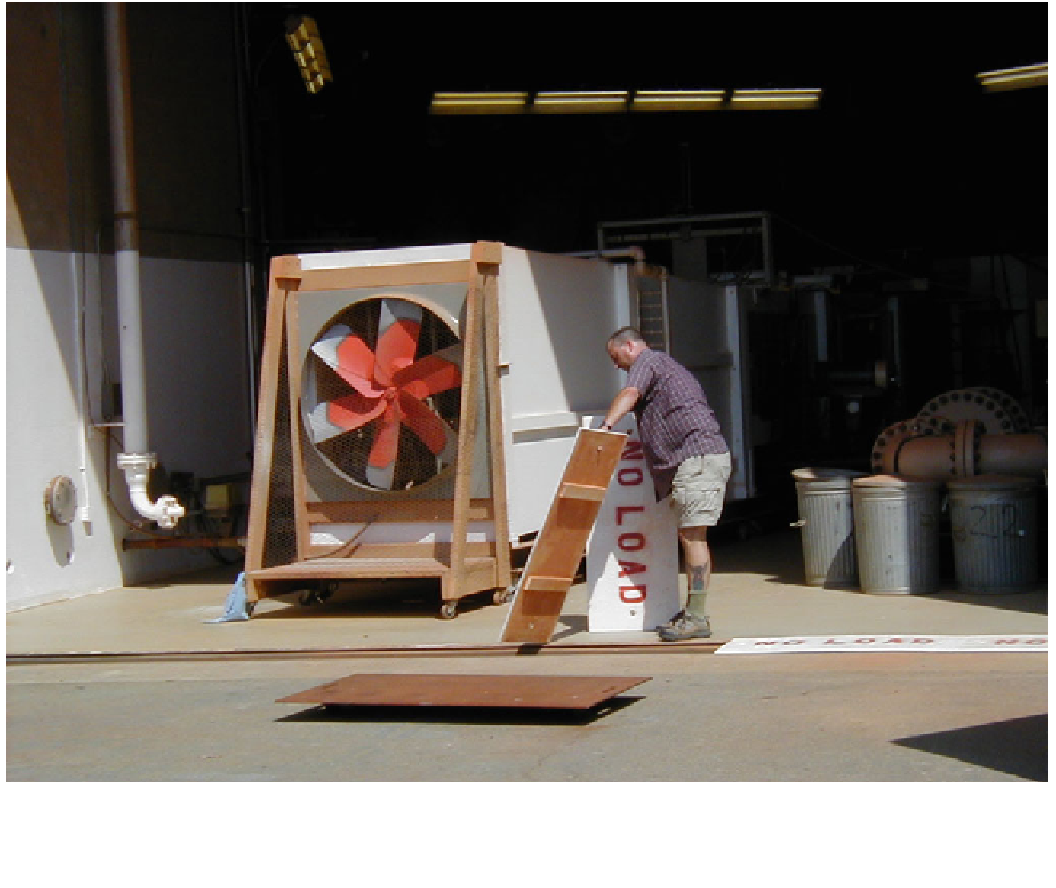Geoscience Reference
In-Depth Information
Fig. 17.10
The fan at the exhaust end of the MARSWIT wind tunnel:
the fan is roughly where the Atlas launcher is in Fig.
17.9
(in which
the vertical pipe at the left can also be seen). The rings of bolts of the
Venus wind tunnel are just visible behind some bins at right. Here the
tunnel operator is removing boards that cover the rails for the steel
doors in preparation for closing up and pumping down the facility.
Photo: R. Lorenz
to low pressure relies on a nearby steam ejector plant whose
prime use is maintaining low pressure during arcjet testing of
heat shield materials—through it is only the availability of
this infrastructure that the Marswit facility exists.
At *5 mb pressure, a typical bladed fan would not
provide sufficient wind energy to approach the speeds nec-
essary to initiate or maintain saltation of sand, so an inno-
vative pressurized nozzle-injector system was devised to
shoot the chamber atmosphere through the tunnel. The
injector system is capable of producing a maximum speed of
13 m/s at one atmosphere pressure, increasing to 180 m/s at
5 mb pressure (Greeley and Iversen 1985, p. 79), which are
more than adequate to explore saltation conditions on both
Earth and Mars. Threshold measurements were collected
under Martian conditions (Greeley et al. 1980), but when
pumping to the building was discontinued, threshold speed
measurements were also conducted as the chamber pressure
slowly
conditions at pressure levels in between that of Mars and
Earth. In order to simulate the effects of the reduced gravity
level on Mars (*38 % that on Earth), experiments were also
run using ground-up walnut shells (sieved to sand sizes) in
place of typical terrestrial quartz sand (Greeley et al. 1974a,
b). These ground-breaking measurements provided the first
experimental data on saltation under Martian conditions, as
well as supporting numerous follow-up experiments to
investigate a host of aeolian processes at pressures relevant
to Mars conditions. Note, however, that while substituting a
lower-density sediment correctly influences the force bal-
momentum in saltating particles is less than it should be, so
these experiments may overestimate the 'impact' threshold
for saltation.
The advent of European interest in performing Mars
lander or rover missions has stimulated wind tunnel work
there too. Here, lacking the massive infrastructure at NASA
increased, allowing
the exploration of threshold

Search WWH ::

Custom Search